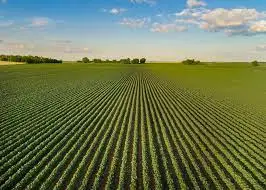
Understanding Sustainable Agriculture And Its Impact On Food Production
By Evert Heijns | June 10, 2023
As a society, we are becoming increasingly aware of the impact that our actions have on the environment. We know that what we do today will have consequences for future generations, and this is especially true when it comes to food production.
Sustainable agriculture is an approach to farming that seeks to balance the needs of soil, water, plants, animals, and people in a way that supports long-term health and productivity.
Understanding sustainable agriculture is important because it has a significant impact on food production. By using ecologically sound and economically viable approaches to agriculture, farmers can produce high-quality crops while reducing their environmental footprint.
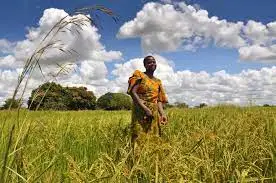

This not only benefits the planet but also ensures that we have access to healthy and nutritious food now and in the future. In this article, we will explore what sustainable agriculture means, why it is important for food production, and some of the key practices associated with this approach to farming.
Key Takeaways
- Sustainable agriculture involves balancing the needs of soil, water, plants, animals, and people for long-term health and productivity.
- Practices such as crop rotation, reduced tillage, integrated pest management, and conservation of resources can improve soil health and fertility, increase biodiversity, and enhance resilience to climate change.
- Supporting farming communities through access to education, technology, and financial assistance, as well as promoting social justice and fair trade, is crucial for sustainable agriculture.
- Regenerative farming practices, livestock management, agroforestry systems, cover cropping, and natural fertilizers are some of the key practices that can support sustainable agriculture and improve food production.
- Key Takeaways
- Defining Sustainable Agriculture
- The Importance of Environmental Responsibility in Agriculture
- Supporting the Long-Term Health and Productivity of Farming Communities
- Balancing the Needs of Soil, Water, Plants, Animals, and People
- Ecologically Sound and Economically Viable Approaches to Agriculture
- Crop Rotation and Conservation Tillage
- Cover Cropping and Integrated Pest Management
- Natural Fertilizers and Biological Controls for Sustainable Agriculture
- Frequently Asked Questions
- How does sustainable agriculture impact the local economy?
- What role do government policies play in promoting sustainable agriculture?
- How can consumers support sustainable agriculture practices?
- Are there any challenges or obstacles to implementing sustainable agriculture practices?
- How does sustainable agriculture address issues of food security and access for marginalized communities?
- Conclusion
Defining Sustainable Agriculture
You may be wondering, “What exactly is sustainable agriculture?” Well, it’s a set of farming practices that prioritize the long-term health and productivity of the land, while also taking into account social and economic factors.
By working with nature instead of against it, sustainable agriculture can provide numerous benefits for farmers and communities alike. Some of these benefits include improved soil health and fertility, increased biodiversity on farms, lower greenhouse gas emissions from agricultural activities, and enhanced resilience to climate change.
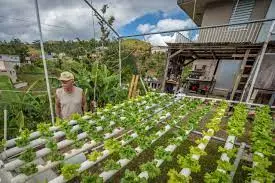

Sustainable agriculture can also lead to higher yields in the long run by maintaining healthy soil conditions that support plant growth. However, there are also challenges associated with implementing these practices on a large scale – such as lack of access to resources or knowledge among small-scale farmers.
Despite these challenges, there is growing innovation in sustainable agriculture around the world. From agroforestry systems that combine trees with crops for multiple benefits to precision farming techniques that reduce waste and increase efficiency on larger farms – there are many ways to improve upon traditional methods.
As we continue to grapple with global issues like food insecurity and environmental degradation, sustainable agriculture will have an increasingly important role to play in shaping our future food system.
As we consider the importance of environmental responsibility in agriculture moving forward, it’s clear that sustainable practices must be at the forefront of any solution.
By promoting more holistic approaches to land use that emphasize balance between human needs and ecosystem health – we can create a more resilient food system for all.
The Importance of Environmental Responsibility in Agriculture
When it comes to being environmentally responsible in farming, it’s important to consider the impact of our actions on the planet. As farmers, we play a crucial role in reducing waste and promoting conscious consumption.
One way we can achieve this is by using sustainable practices that reduce our carbon footprint. This includes ethical sourcing of materials and inputs, as well as exploring renewable energy sources for powering our farms.
In addition to reducing waste and promoting conscious consumption, environmental responsibility in agriculture also involves taking climate action.
Climate change has already had a significant impact on crop yields and weather patterns, making it more difficult for farmers to maintain productivity levels.
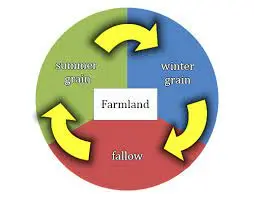
However, by implementing sustainable practices such as crop rotation and soil conservation methods, we can adapt to changing conditions while still maintaining healthy soils and productive farmland. At its core, environmental responsibility is all about balancing economic needs with ecological sustainability.
By focusing on sustainable agriculture practices that support the long-term health and productivity of farming communities, we can ensure that future generations will have access to healthy food options while protecting the planet for years to come.
Through intentional efforts towards reducing waste, conscious consumption, ethical sourcing, renewable energy use, and climate action, the agricultural industry can continue being economically viable while considering its impact on the environment.
Supporting the Long-Term Health and Productivity of Farming Communities
By prioritizing the well-being of farming communities, we can ensure a sustainable and prosperous future for agriculture. Community empowerment is crucial in achieving this goal.
By providing resources and support to rural areas, we can help farmers build resilience against economic and environmental challenges. This includes access to education, technology, and financial assistance.
Social justice must also be considered when supporting farming communities. Fair trade ensures that farmers receive a fair price for their products, allowing them to reinvest in their farms and improve their livelihoods.
Rural development programs should prioritize marginalized groups such as women and indigenous peoples, who often face barriers to accessing resources and opportunities. Investing in the long-term health and productivity of farming communities not only benefits those individuals but also contributes to overall food security.

By ensuring that farmers have access to the tools they need to thrive, we can increase food production while also promoting sustainability. Ultimately, supporting farming communities is an essential step towards building a more equitable and resilient agricultural system.
As we consider the importance of community empowerment and social justice in agriculture, it’s important to remember that these efforts are just one part of balancing the needs of soil, water, plants, animals, and people.
By taking a holistic approach that considers all aspects of sustainability, we can create a thriving agricultural system that benefits everyone involved.
Balancing the Needs of Soil, Water, Plants, Animals, and People
Balancing the needs of soil, water, plants, animals, and people is essential to creating a holistic and thriving agricultural system. Soil nutrients are vital for plant growth, and it’s crucial to maintain an appropriate balance of minerals in the soil.
Overuse of fertilizers can lead to nutrient depletion and contamination of nearby water sources. Therefore, sustainable agriculture practices focus on maintaining healthy soils by using organic matter such as compost or cover crops instead of chemical inputs.
Water conservation is another critical aspect of sustainable agriculture. It involves reducing water use through efficient irrigation techniques, rainwater harvesting systems, and minimizing water loss due to evaporation or runoff.
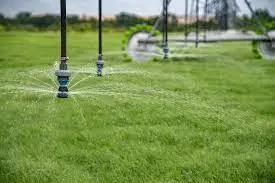
Sustainable farmers also prioritize biodiversity preservation by planting a diverse range of crops that support beneficial insects and wildlife while reducing pests’ impact.
Furthermore, animal welfare and human health are integral components of sustainable agriculture practices. Caring for animals with respect and attention to their natural behaviors ensures healthy livestock that produce high-quality products while avoiding unnecessary harm or suffering.
Likewise, prioritizing human health means growing food without harmful chemicals or pesticides that could have adverse effects on consumers’ well-being.
By balancing the needs of soil, water, plants, animals, and people holistically in farming communities around the world today, we can create a brighter tomorrow with abundant resources for generations yet unborn.
As we move towards ecologically sound and economically viable approaches to agriculture, let’s remember that balancing soil nutrients takes time but yields great results in crop productivity. Conserving water ensures adequate supply for all living things.
Preserving biodiversity supports ecosystem resilience against climate change impacts. Prioritizing animal welfare fosters healthy livestock production.
Lastly, focusing on human health guarantees safe food consumption habits leading to improved quality life expectancy for all species, including humans alike!
Ecologically Sound and Economically Viable Approaches to Agriculture
Ecologically sound and economically viable approaches to agriculture ensure a bright future for our planet and communities. Regenerative farming practices prioritize soil health in order to improve the overall productivity of the land.
These methods focus on creating diverse ecosystems that work together to support plant growth, increase carbon sequestration, and reduce water runoff. One way to increase soil health is through sustainable livestock management.
By using rotational grazing techniques, farmers can allow animals to graze freely while also giving the land time to rest and regenerate. This not only improves soil quality but also reduces stress on the animals, leading to healthier livestock that require less medication and ultimately produce higher quality meat products.

Another approach is by incorporating agroforestry systems into traditional farming practices. These systems combine trees with crops or livestock in a mutually beneficial way.
Trees can provide shade for animals, help retain water in the soil, and even serve as a source of food or income for farmers. Agroforestry systems have been shown to increase biodiversity in agricultural landscapes which helps support pollinators and other important species.
Incorporating regenerative farming practices like these provides numerous benefits for both the environment and local communities. In our next section, we’ll explore how crop rotation and conservation tillage can further enhance sustainable agriculture efforts without sacrificing yields or profits.
Crop Rotation and Conservation Tillage
Crop rotation and conservation tillage are effective methods that can improve soil health and increase crop yields. Did you know that a study found that crop rotation increased corn yields by 9% compared to continuous corn cropping?
Crop rotation involves planting different crops in the same field over time, while conservation tillage involves reducing the amount of soil disturbance during planting and harvesting.
These practices help to prevent erosion, retain moisture in the soil, and reduce the need for chemical inputs. In addition to improving soil health, reduced tillage can also help with weed management.
By disturbing the soil less frequently, weed seeds are less likely to germinate and grow. This can reduce the need for herbicides and manual weeding, leading to cost savings for farmers while also reducing environmental impacts.
Furthermore, improved soil health can lead to better nutrient uptake by plants, resulting in higher crop yields. Overall, incorporating crop rotation and conservation tillage into agriculture practices can have numerous benefits for both farmers and the environment.
These practices not only improve soil health but also lead to reduced use of chemicals and increased yield production. In our next section, we’ll explore another important strategy for sustainable agriculture: cover cropping and integrated pest management.
Cover Cropping and Integrated Pest Management
We’ve learned about the importance of crop rotation and conservation tillage in sustainable agriculture. Both practices help maintain soil health, reduce erosion, and increase yield over time.
However, there are other methods that can be used to further support sustainable agriculture. One such method is cover cropping. Cover cropping involves planting crops specifically for the purpose of improving soil health during fallow periods.
These crops not only prevent soil erosion but also add nutrients back into the soil and improve its structure. This leads to healthier plants with stronger pest resistance and better overall yields.
Another key component of sustainable agriculture is integrated pest management (IPM). IPM involves using a combination of techniques to manage pests without relying solely on harmful chemicals.
This includes crop rotation, habitat manipulation, biological controls, and targeted pesticide use when necessary. While IPM can be effective in reducing pest populations, it may not always be 100% successful and there are potential drawbacks to consider.
Overall, both cover cropping and IPM can provide numerous benefits for sustainable agriculture including improved soil health, increased pest resistance, and higher yields.
However, they both require careful consideration of seasonal variations as well as potential drawbacks before implementing them on a large scale.
Moving forward into our next topic on natural fertilizers and biological controls for sustainable agriculture, we’ll explore additional ways to support healthy plant growth while minimizing negative environmental impact.
Natural Fertilizers and Biological Controls for Sustainable Agriculture
Let’s explore how using natural fertilizers and biological controls can help us grow healthier crops while minimizing harm to the environment. Organic alternatives such as green manure, companion planting, and biofertilizers can all contribute to sustainable agriculture practices.
Green manure involves planting cover crops that are later turned into the soil to add nutrients and organic matter. Companion planting involves strategically planting different crops together to enhance growth and control pests naturally.
Biofertilizers consist of microorganisms that improve soil health and nutrient uptake in plants. Soil microbiology plays a crucial role in sustainable agriculture as it supports plant growth by providing essential nutrients, breaking down organic matter, and preventing diseases.
Using chemical fertilizers disrupts this delicate balance by killing beneficial microorganisms along with harmful ones, leading to long-term damage to the soil ecosystem. In contrast, natural fertilizers such as compost or manure contain a diverse range of microorganisms that promote healthy soil biology without harming the environment.
Biological controls offer an alternative approach to traditional pesticide use by introducing natural predators or pathogens that target specific pests or diseases.
This method is much more targeted than broad-spectrum pesticides, reducing harm to non-target organisms and minimizing environmental pollution.
Incorporating these sustainable practices into agricultural systems not only benefits farmers economically but also ensures food security for future generations while preserving our planet’s biodiversity.
Frequently Asked Questions
How does sustainable agriculture impact the local economy?
Let’s explore how sustainable agriculture, through small scale farming and community engagement, can positively impact the local economy. Market access and job creation are key benefits, while also promoting environmental sustainability.
What role do government policies play in promoting sustainable agriculture?
Incentives and subsidies, education and awareness, regulation and enforcement, research and development, collaboration and partnerships are essential government policies to promote sustainable agriculture. These measures lead to healthier food systems, environmental protection, economic growth, and social equity.
How can consumers support sustainable agriculture practices?
Did you know that 1 in 3 consumers are willing to pay more for sustainably produced food? This shows the importance of consumer education and conscious consumption. Direct support, community engagement, and market demand can also drive sustainable agriculture practices.
Are there any challenges or obstacles to implementing sustainable agriculture practices?
Implementing sustainable agriculture practices face challenges such as soil degradation, lack of financial investment and education programs, cultural barriers, and limited crop diversity. Overcoming these obstacles requires collective efforts to promote natural resource conservation, improve economic incentives and increase access to relevant knowledge.
How does sustainable agriculture address issues of food security and access for marginalized communities?
Ensuring food security for marginalized communities requires community engagement and education initiatives on sustainable agriculture. Practices such as crop diversity, soil health maintenance, and water conservation can improve yields and access to healthy food.
Conclusion
In conclusion, sustainable agriculture is an essential approach to food production that puts the health of our planet and its inhabitants at the forefront.
By adopting ecologically sound and economically viable practices such as crop rotation, conservation tillage, cover cropping, integrated pest management, natural fertilizers, and biological controls, we can ensure that farming communities thrive while preserving natural resources for generations to come.
One example of successful sustainable agriculture is the story of a small-scale farmer in Kenya who implemented agroforestry practices on his land.
By planting trees alongside his crops and incorporating livestock into his system, he was able to improve soil fertility, reduce erosion, increase yields and income while also providing habitat for wildlife.
This not only benefited him but also helped promote biodiversity in the region. Overall, sustainable agriculture offers a promising solution to the challenges facing our food systems today.
By prioritizing environmental responsibility and supporting long-term productivity of farming communities through balanced approaches that consider soil health, water conservation, plant and animal welfare along with human needs; we can create a healthier future for ourselves and our planet.
For more articles about eco-friendly and sustainable lifestyle go to this page.
